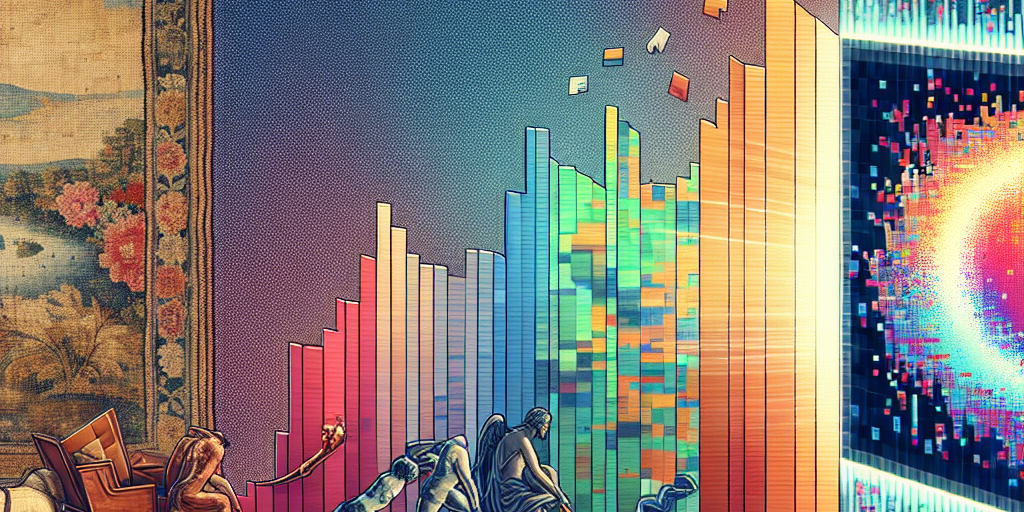Redefining Art Investment: The Emergence of Video and Digital Art as a New Frontier
In the ever-evolving art world, new mediums and platforms continuously emerge, challenging our perceptions and broadening our horizons. Over the past century, the art community has witnessed the rise of modernism, abstract expressionism, and conceptual art. Today, we stand on the precipice of another groundbreaking development: the rise of video and digital art. These new forms are not merely changing the way we experience art but are also redefining art investment in profound and exciting ways.
The Digital Renaissance
Video and digital art encompass a broad spectrum of creative endeavors, from computer-generated graphics and animations to interactive installations and virtual reality experiences. As technology advances, artists are harnessing these tools to create works that push the boundaries of traditional media. Pioneers like Nam June Paik and Bill Viola laid the groundwork for video art, while contemporary artists such as Refik Anadol and Beeple are leading the charge into the digital and virtual realms.
Democratizing Art and Value
One of the most significant shifts this new art form brings is the democratization of art investment. Traditional art markets often favor tangible, one-of-a-kind works, such as paintings and sculptures, which are accessible only to an elite class of investors. Video and digital art, however, can be reproduced, shared, and experienced by a global audience, breaking down the barriers of exclusivity.
Platforms like NFTs (Non-Fungible Tokens) have further revolutionized this space. NFTs represent ownership of a unique digital asset and have enabled artists to monetize their digital creations directly. This has opened new avenues for both emerging and established artists to connect with buyers and investors, fostering a more inclusive market.
The Allure of Interactivity
Video and digital art invite viewers to participate in the narrative, creating immersive and interactive experiences that are often absent in traditional forms. This interactivity enhances the emotional and aesthetic appeal of the work, providing a compelling investment opportunity for those seeking engaging and multi-faceted assets.
For example, augmented reality (AR) and virtual reality (VR) art installations can transform physical spaces or offer entirely new virtual environments. Investors are no longer purchasing a static piece of art but rather a dynamic experience that can evolve and adapt over time.
Assessing Value in the Digital Age
Valuing video and digital art comes with its own set of challenges and opportunities. Traditional metrics like provenance, rarity, and condition are being rethought. Instead, factors such as the artist’s digital footprint, the technological innovation behind the artwork, and the community engagement it generates are becoming important indicators of value.
Moreover, NFTs provide a transparent ledger of ownership and transaction history, adding a layer of security and authenticity to digital art investments. This transparency is crucial in an art market often plagued by forgery and misattribution.
Sustainability and Longevity
In an age increasingly aware of environmental sustainability, video and digital art offer a more eco-friendly alternative to traditional mediums. Digital artworks do not require physical materials or spaces for storage and display, reducing their carbon footprint. This sustainability aspect is becoming increasingly attractive to a new generation of environmentally conscious investors.
The Future Landscape
The rise of video and digital art represents more than just a trend; it signifies a fundamental shift in how we perceive and engage with art. As technology continues to advance, the lines between digital and physical realities will blur further, creating new opportunities for artists and investors alike.
Investment in video and digital art is not without its risks, as the market is still relatively young and can be volatile. However, with careful consideration and a keen eye for innovation, investors can tap into a vibrant and rapidly expanding sector that promises to redefine art and its value for generations to come.
In conclusion, the emergence of video and digital art marks a new frontier in art investment. It challenges traditional norms, democratizes access, and opens up exciting possibilities for interactivity and sustainability. As we navigate this digital renaissance, one thing is certain: the art world will never be the same again.







